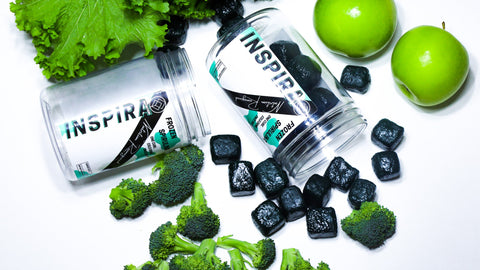
Fresh Frozen vs Powdered Spirulina
Spirulina is a name that has become synonymous with superfoods, renowned for its exceptional nutritional profile and myriad health benefits. However, not all spirulina is created equal. In this blog post, we’ll explore the differences between frozen and powdered spirulina, and why fresh spirulina holds a particular advantage for health & wellness enthusiasts.
What is Spirulina?
Spirulina is a type of blue-green algae praised for its rich concentration of vitamins, minerals, antioxidants, and proteins. It comes in various forms, including fresh, frozen, and powdered. Each form offers unique benefits and drawbacks, which we'll explore in detail.
Key Benefits of Fresh Spirulina
1. Biologically Active Enzymes
One of the standout benefits of fresh spirulina is that its enzymes are frozen and remain biologically active. Enzymes play a crucial role in numerous bodily functions, including digestion and metabolism. The freezing process helps preserve these enzymes, ensuring that you receive their full biological benefits.
2. Antioxidant Potency
Antioxidants are essential for protecting your cells from damage by free radicals. Fresh spirulina’s antioxidants are preserved in their most potent form because they haven't had a chance to degrade from oxygen exposure and heat as they might during the drying process of powdered spirulina. This means you get the maximum antioxidant benefits when consuming fresh spirulina. Allowing you to potentially recovery quicker post activity.
3. Neutral Taste
If you’ve tried powdered spirulina, you’re probably familiar with its strong, distinctive taste. Fresh spirulina, on the other hand, has little to no taste, making it easier to incorporate into a variety of drinks and smoothies without altering their flavor.
Comparison Criteria
Nutrient Retention
- Fresh Spirulina: Maintains higher levels of enzymes, vitamins, and minerals due to minimal processing.
- Powdered Spirulina: Some nutrients and enzymes can be lost during the drying process, reducing its overall nutritional value.
Taste
- Fresh Spirulina: Virtually tasteless, making it versatile for on the go into your water bottle
- Powdered Spirulina: Strong, earthy taste that can be off-putting for some people.
Cost
- Fresh Spirulina: Generally more expensive due to the costs associated with freezing and preserving its freshness, putting the benefit of "you get what you pay for".
- Powdered Spirulina: More affordable and widely available but often at the expense of nutrient quality.
Benefits
- Fresh Spirulina: Offers higher antioxidant and enzyme activity, promoting better health and well-being.
- Powdered Spirulina: Still beneficial but may not provide the same level of potency as fresh spirulina.
Recovery
- Fresh Spirulina: The high enzyme and antioxidant activity aids in faster muscle recovery and better overall anti-inflammatory benefits post exercise.
- Powdered Spirulina: Effective for recovery but may not be as efficient due to the loss of some active components.
Uses
- Fresh Spirulina: Can be added to smoothies, juices, sports drinks, and even water without affecting taste.
- Powdered Spirulina: Commonly used in smoothies, shakes, and health bars but may require additional flavoring to mask its taste.
Convenience
- Fresh Spirulina: Requires refrigeration and has a shorter shelf life, but offers superior health benefits.
- Powdered Spirulina: Easy to store and has a long shelf life, but comes at the cost of reduced potency and anti-inflammatory molecules.
Conclusion
In the debate of fresh vs powdered spirulina, fresh spirulina emerges as the superior choice in terms of nutrient retention, taste, and overall health benefits. While it may come at a higher cost and require more careful storage, the advantages of biologically active enzymes and potent antioxidants make it a worthy investment for those serious about their health and wellness.
Ready to elevate your health with fresh spirulina? Try fresh spirulina today and watch recovery skyrocket and energy levels stay consistently rise.
See our shop here
